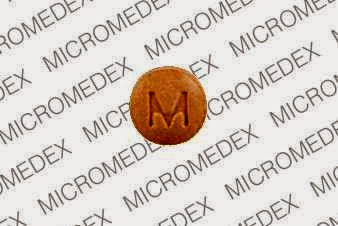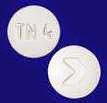TRANDOLAPRIL AND VERAPAMIL
(tran DOL a pril and ver AP a mil) Brand: Tarka










What is the most significant information I must know about trandolapril and verapamil?
• Do not use trandolapril and verapamil if you are pregnant. It could harm the unborn child. Stop using this medicine and speak your doctor right away if you become pregnant.
• You must not use this medication if you have determined serious heart problems, or if you are allergic to trandolapril (Mavik) or similar medicines such as benazepril (Lotensin), captopril (Capoten), fosinopril (Monopril), enalapril (Vasotec), lisinopril (Prinivil, Zestril), moexipril (Univasc), perindopril (Aceon), quinapril (Accupril), or ramipril (Altace).
• There are much another drugs that can interact with trandolapril and verapamil. Speak your doctor about all medications you use.
• Hold using this medication as directed, even if you feel well. Tall blood pressure often has no symptoms. You may need to use blood pressure medicine for the rest of your life.
• Speak your doctor if you have a prolonged diseases that causes diarrhea or vomiting.
What is trandolapril and verapamil?
• Trandolapril is an ACE inhibitor. ACE stands for angiotensin converting enzyme.
• Verapamil is a calcium channel blocker. It works by relaxing the muscles of your heart and blood vessels.
• The combination of trandolapril and verapamil is used to treat tall blood pressure (hypertension).
• Trandolapril and verapamil may also be used for purposes not listed in this medicine guide.
What must I discuss with my healthcare provider till taking trandolapril and verapamil?
• You must not use this medication if you are allergic to trandolapril (Mavik) or verapamil (Calan, Covera, Isoptin, Verelan), or if you have:
· determined serious heart conditions, especially "sick sinus syndrome" or "AV block" (unless you have a pacemaker);
· a heart rhythm disorder;
· low blood pressure; or
· if you are allergic to any another ACE inhibitor, such as benazepril (Lotensin), captopril (Capoten), fosinopril (Monopril), enalapril (Vasotec), lisinopril (Prinivil, Zestril), moexipril (Univasc), perindopril (Aceon), quinapril (Accupril), or ramipril (Altace).
• To create certain you can safely take trandolapril and verapamil, speak your doctor if you have any of these another conditions:
· kidney malady (or if you are on dialysis);
· liver disease;
· congestive heart failure;
· diabetes;
· a nerve-muscle malady such as muscular dystrophy; or
· a connective tissue malady such as Marfan syndrome, Sjogren's syndrome, lupus, scleroderma, or rheumatoid arthritis.
• FDA pregnancy category D. Do not use trandolapril and verapamil if you are pregnant. Stop using this medicine and speak your doctor right away if you become pregnant. Trandolapril and verapamil can reason injury or death to the unborn child if you take the medication during your second or third trimester. Use effective birth control while taking trandolapril and verapamil.
• Trandolapril and verapamil can pass into breast milk and may harm a nursing child. You must not breast-feed while you are using trandolapril and verapamil.
How must I take trandolapril and verapamil?
• Take exactly as predesigned by your doctor. Do not take in larger or less amounts or for longer than recommended. Follow the directions on your prescription label.
• Your doctor may occasionally change your doze to create certain you get the excellent results.
• Trandolapril and verapamil works excellent if you take it with food.
• Your blood pressure will need to be checked often. Visit your doctor regularly.
• Conditions that may reason very low blood pressure include: vomiting, diarrhea, hard sweating, heart malady, dialysis, a low salt diet, or taking diuretics (water pills). Follow your doctor's instructions about the type and amount of liquids you must drink while taking trandolapril and verapamil. Speak your doctor if you have a prolonged diseases that causes diarrhea or vomiting.
• If you need surgery, speak the surgeon onward of time that you are using trandolapril and verapamil.
• Hold using this medication as directed, even if you feel well. Tall blood pressure often has no symptoms. You may need to use blood pressure medicine for the rest of your life.
• Store at room temperature away from moisture and heat.
What happens if I miss a dose?
• Take the missed doze as soon as you remember. Skip the missed doze if it is nearly time for your following scheduled doze. Do not take extra medication to create up the missed dose.
What happens if I overdose?
• Search abnormal medical attention or call the Poison Help line at 1-800-222-1222.
• Overdose symptoms may include slow heart course, weak pulse, muscle weakness, tingly feeling, seizure (convulsions), feeling light-headed, or fainting.
What must I avoid while taking trandolapril and verapamil?
• Avoid getting up too quick from a sitting or lying position, or you may feel dizzy. Get up slowly and steady yourself to prevent a fall.
• Do not use salt substitutes or potassium supplements while taking trandolapril and verapamil, unless your doctor has told you to.
What are the possible side effects of trandolapril and verapamil?
• Get abnormal medical help if you have any of these signs of an allergic reaction: hives; severe stomach pain; difficulty breathing; swelling of your person, lips, tongue, or throat.
• Call your doctor at once if you have any of these serious side effects:
· urinating smaller than normal or not at all;
· swelling, weight gain, feeling short of breath;
· feeling like you might pass out;
· anxiety, sweating, pale skin, severe shortness of breath, wheezing, gasping for breath, cough with foamy mucus;
· chest pain, quick, slow, or uneven heart course; or
· fever, upper stomach pain, and jaundice (yellowing of the skin or eyes).
• Smaller serious side effects may include:
· cough;
· headache;
· runny or stuffy nose, sore throat;
· constipation, diarrhea;
· dizziness;
· back pain;
· joint pain; or
· nausea.
• This is not a complete list of side effects and others may occur. Call your doctor for medical advice about side effects. You may message side effects to FDA at 1-800-FDA-1088.
What another drugs will affect trandolapril and verapamil?
• Much drugs can interact with trandolapril and verapamil. Adown is just a partial list. Speak your doctor if you are using:
· buspirone (BuSpar);
· colchicine (Colcrys);
· cyclosporine (Neoral, Sandimmune, Gengraf);
· dexamethasone (Cortastat, Dexasone, Solurex, DexPak);
· digoxin (digitalis, Lanoxin);
· gold injections (to treat arthritis);
· lithium (Lithobid, Eskalith);
· phenobarbital (Solfoton) or another barbiturates;
· insulin or oral diabetes medication;
· sirolimus (Rapamune) or tacrolimus (Prograf);
· St. John's wort;
· theophylline (Elixophyllin, Respbid, Theo-Dur, and others);
· an antibiotic such as clarithromycin (Biaxin), erythromycin (E.E.S., EryPed, Ery-Tab, Erythrocin, Pediazole), rifampin (Rifadin, Rifater, Rifamate) and others;
· antifungal medicine such as itraconazole (Sporanox), ketoconazole (Nizoral), miconazole (Oravig), or voriconazole (Vfend);
· aspirin or another NSAIDs (non-steroidal anti-inflammatory drugs) such as ibuprofen (Advil, Motrin), naproxen (Aleve, Naprosyn, Naprelan, Treximet), celecoxib (Celebrex), diclofenac (Arthrotec, Cambia, Cataflam, Voltaren, Flector Patch, Pennsaid, Solareze), indomethacin (Indocin), meloxicam (Mobic), and others;
· a beta-blocker such as atenolol (Tenormin), carvedilol (Coreg), metoprolol (Lopressor, Toprol), propranolol (Inderal, InnoPran), and others;
· a diuretic (water pill);
· drugs to treat tall blood pressure or a prostate mess, such as alfuzosin (Uroxatral), doxazosin (Cardura), prazosin (Minipress), terazosin (Hytrin), tamsulosin (Flomax);
· cholesterol-lowering drugs such as atorvastatin (Lipitor, Caduet), lovastatin (Mevacor, Altoprev, Advicor), or simvastatin (Zocor, Simcor, Vytorin, Juvisync);
· heart rhythm or blood pressure medicine such as disopyramide (Norpace), flecainide (Tambocor), nicardipine (Cardene) or quinidine (Quin-G);
· HIV or AIDS medicine; or
· seizure medicine such as carbamazepine (Carbatrol, Equetro, Tegretol), phenytoin (Dilantin), and others.
• This list is not complete and there are much another drugs that can interact with trandolapril and verapamil. Speak your doctor about all medications you use. This includes prescription, over-the-counter, vitamin, and herbal commodity. Do not start a new medicine without telling your doctor. Hold a list of all your medicines and show it to any healthcare provider who treats you.
Where can I get more information?
• Your pharmacist can provide more information about trandolapril and verapamil.
Remember, hold this and all another medicines out of the reach of children, never share your medicines with others, and use this medicine only for the indication prescribed.
Disclaim: Each effort has been made to ensure that the information provided by Cerner Multum, Inc. ('Multum') is accurate, up-to-date, and complete, but no guarantee is made to that effect. Drug information contained herein may be time sensitive. Multum information has been compiled for use by healthcare practitioners and consumers in the United States and therefore Multum does not warrant that uses external of the United States are appropriate, unless specifically indicated otherwise. Multum's drug information does not endorse drugs, diagnose patients or recommend therapy. Multum's drug information is an informational resource designed to assist licensed healthcare practitioners in caring for their patients and/or to serve consumers viewing this service as a supplement to, and not a substitute for, the expertise, skill, knowledge and judgment of healthcare practitioners. The absence of a warning for a given drug or drug combination in no way must be construed to indicate that the drug or drug combination is safety, effective or appropriate for any given patient. Multum does not assume any responsibility for any aspect of healthcare administered with the help of information Multum provides. The information contained herein is not intended to cover all possible uses, directions, precautions, warnings, drug interactions, allergic reactions, or adverse effects. If you have questions about the drugs you are taking, check with your doctor, nurse or pharmacist.